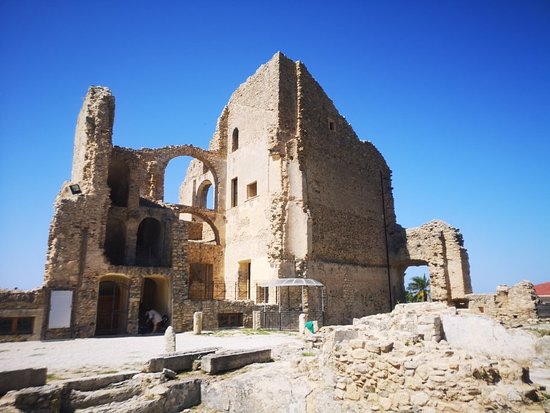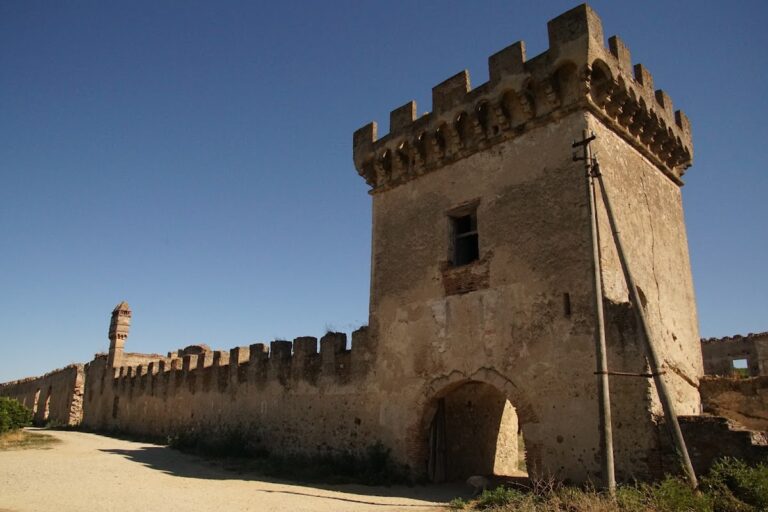Castello della Valle: A Medieval and Renaissance Fortress in Fiumefreddo Bruzio, Italy
Visitor Information
Google Rating: 4.6
Popularity: Low
Google Maps: View on Google Maps
Official Website: www.comune.fiumefreddobruzio.cs.it
Country: Italy
Civilization: Unclassified
Remains: Military
History
Castello della Valle, also known as Castello di Fiumefreddo, stands in the municipality of Fiumefreddo Bruzio in Italy. This medieval fortress was originally established in 1201 by local builders during the early 13th century, reflecting the defensive needs and feudal organization of the time.
In the early 16th century, specifically in 1531, the castle and its surrounding fief were granted by Emperor Charles V to Marquis Hernando de Alarcón. The new lord undertook significant renovations to transform the medieval fortress into a residential palace inspired by Renaissance ideals. Among the most notable changes was the addition of a grand entrance portal designed in a style influenced by the renowned artist Michelangelo, marking a clear shift from purely military to noble domestic use.
The castle’s strategic importance resurfaced during the Napoleonic Wars in the early 19th century. Between 1806 and 1807, it endured a fierce siege by French forces led by General Renyer, who also besieged nearby towns such as Belmonte Calabro and Amantea. The castle was defended by Giovanni Battista de Micheli, who held the position of vice-president of the Calabria Citra province. After sustaining extensive damage, including visible cannonball impacts, the castle capitulated on 12 February 1807.
In the late 20th century, beginning in the mid-1970s, the castle found a new cultural role through the work of artist Salvatore Fiume. He painted murals inside the castle ruins, with the “Room of Wishes” standing out as a focal point of his artistic contribution. During the 1990s, Fiume also produced bronze sculptures for the village, which were originally displayed outdoors near panoramic squares. These works have since been restored and relocated to the town council hall. Recognizing its layered historical and cultural significance, local authorities officially declared the castle a “Monument Against All Wars” in 2006, highlighting both its role in past conflicts and its message of peace.
Remains
The remains of Castello della Valle present as the rugged outline of a medieval fortress that has largely fallen into ruin. Of the original complex, the underground chambers are the only sections that have been fully restored and remain partially accessible today. These subterranean spaces offer a tangible connection to the castle’s past, though the upper structures have succumbed to time and conflict.
Dominating the entrance is a portal that dates from the 16th-century renovation under Marquis Hernando de Alarcón. Crafted in the Renaissance style with clear influence from Michelangelo, this gateway stands out as a rare surviving element of the castle’s transformation from a military stronghold into a noble residence. Its stonework reflects refined artistic sensibilities, contrasting with the fortress’s otherwise rugged remains.
The exterior walls bear clear, visible evidence of the 1806–1807 siege by Napoleonic troops. Cannonball marks scar the masonry, preserved intentionally during restoration efforts to serve as a physical reminder of the castle’s violent past. These scars remain a poignant feature, linking the structure’s stones to the turmoil of early 19th-century warfare.
Inside, the castle hosts the murals painted by Salvatore Fiume beginning in the 1970s and renewed in the 1990s after deterioration. These murals depict Fiume’s imaginative vision of Fiumefreddo, adding a modern artistic layer to the historic setting. The “Room of Wishes” is particularly notable, adorned with painted walls that complement two bronze sculptures originally displayed outside. While weather has necessitated the restoration and moving of these sculptures indoors to the council chamber, the room itself remains a central feature within the ruins, blending Renaissance architecture with contemporary art.
Situated near panoramic squares overlooking the Tyrrhenian Sea, the castle remains a focal point in Fiumefreddo Bruzio’s historic center. The placement of its monumental artworks close to scenic viewpoints enhances the cultural resonance of the site and entwines its medieval heritage with modern artistic expression.










